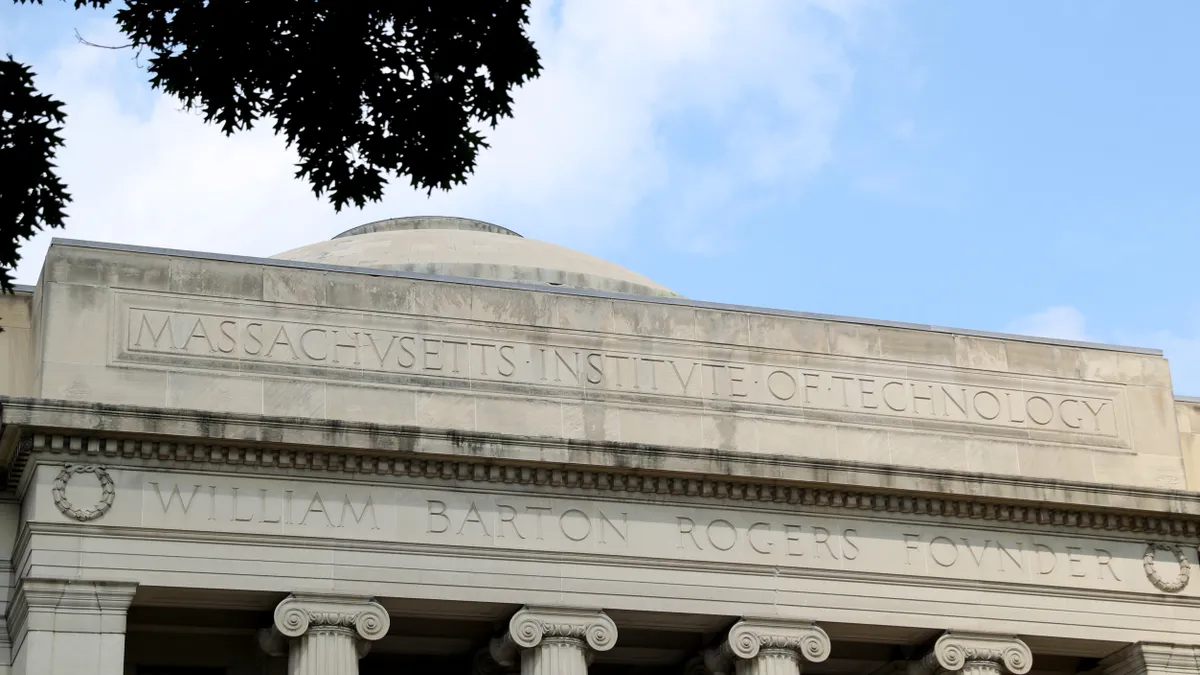Last year’s news that Yale and Harvard universities’ law schools will no longer cooperate with U.S. News & World Report’s rankings brought on waves of speculation in the higher education world.
Would the Ivy League institutions’ moves be the first cracks in the foundation of U.S. News’ system? Would they prompt major changes to its methodology? Would other institutions follow?
The answer to the last question was yes, as more law schools, and then medical and undergraduate colleges, abandoned the rankings over the past several months. With each college defection, questions arose anew.
The release of U.S. News’ bread-and-butter product, the Best Colleges undergraduate rankings, is due in a couple of months. The magazine, which first published the list in 1983, has published it in September in recent years.
To help higher education leaders navigate the changing landscape, Higher Ed Dive compiled a guide distilling some details they may have missed, along with some important rankings history.
How did the rankings drama all begin?
With Yale and Harvard law schools in November 2022.
Their statements that U.S. News’ legal rankings disincentivize support for low-income students and those pursuing public-interest careers prompted swaths of other colleges to abandon them, citing similar reasoning.
Who has dropped out thus far?
Dozens of law and medical schools. Several undergraduate colleges have also turned away, including Colorado College, Bard College, Columbia University, Stillman College, and the Rhode Island School of Design, or RISD.
Reed College has also not participated in the system since 1996.
Far fewer undergraduate institutions have eschewed the rankings than professional schools. Experts say that’s because the Best Colleges list is the most prominent college rankings system, and thus institutions have more to lose if they drop down the ladder.
Columbia stands out partly because it's in the Ivy League. But before it dropped out of the rankings in June, it faced allegations it submitted fraudulent data for the U.S. News rankings.
The accusations appeared to have some merit, as U.S. News kicked Columbia off of the 2022 rankings.
Has U.S. News adjusted in response to colleges’ rejections?
In a couple of ways. In May, it said it would rework the methodology for determining the undergraduate rankings, newly emphasizing colleges’ success in graduating students from marginalized backgrounds and removing metrics like alumni giving.
Pundits predicted that colleges’ rejection of the rankings wouldn’t spur the system’s wholesale collapse, but would rather give institutions some leverage to force U.S. News to change parts of the methodology they find most objectionable.
U.S. News also twice this year delayed publishing its law and medical school rankings due to what it said was an “unprecedented” volume of questions from institutions. Reuters reported that law schools had flagged possible errors in graduate employment data prior to the rankings’ release.
Ultimately, the college placements on both of the lists didn’t shift much when they were published in May.
How exactly are the undergraduate colleges not cooperating with U.S. News?
Officials at five undergraduate colleges that will no longer work with U.S. News have explained the logic behind their decision. But they have not shared some of the more technical details behind it, such as how exactly they won’t be cooperating with U.S. News.
Columbia and Stillman didn’t respond to questions for this article.
But the other three — RISD, Colorado College and Bard — told Higher Ed Dive that they would no longer complete the “peer assessment survey” that U.S. News sends colleges, which asks comparable institutions to weigh in on each other.
Presidents, provosts and admissions deans rate the quality of academic programs, including their own, with an option to say “don’t know” to questions.
What’s U.S. News saying about all of this?
U.S. News spokesperson Jeanette Perez Colby said in an emailed statement Thursday that the publication “will continue to serve students and families by ranking all undergraduate schools that meet our eligibility requirements.”
Those requirements include having regional accreditation and delivering some in-person undergraduate education.
Perez Colby also directed Higher Ed Dive to a statement U.S. News CEO and executive chair Eric Gertler made after Columbia dropped out of the rankings,
“Students deserve to have a place where they can equitably compare schools to help determine which college is the best fit for them,” Gertler said. “We have consistently stated that our rankings should be one factor in that decision-making process, and we will continue to support students and their families by providing them with the best available data, information and advice in an easily accessible format.
Will the rejections actually spur big changes to the rankings?
Probably not, experts say.
First, U.S. News has said it will draw on public data points to craft the rankings. The Common Data Set, for instance, provides a standardized look at many colleges’ demographics, their enrollment, what sort of degrees they offer, and even what they consider in admissions decisions.
Representatives from RISD and Bard said they would fill out the Common Data Set.
And completion of the peer survey won’t be required for inclusion on U.S. News’ undergraduate rankings, the publication said.
What’s so controversial about U.S. News rankings?
Although the higher ed sector doesn’t universally revile the U.S. News rankings, many college administrators — and especially admissions professionals — do.
There’s a few reasons why.
For one, U.S. News has been consistently pilloried for its methodology.
Consider the peer survey, which last year was 20% of the rankings calculation.
Pundits perceive it as a flawed metric, raising concerns about cases where only some institutions fill it out or administrators don’t know what’s happening at other colleges.
Another part of the methodology under fire is SAT and ACT scores of an incoming class, which some administrators argue have little bearing on the work they’re doing graduating students and putting them on the upward trajectory of social mobility. Standardized assessment scores were 5% of the 2022 methodology.
Critics say much of the rankings are easily gamed, but they’re deeply baked into higher ed’s culture.
Colleges broadcast their placements to attract prospective students and alumni dollars. Governing boards appreciate a high ranking. Florida at one point even shaped its funding model for public colleges on the rankings.

















